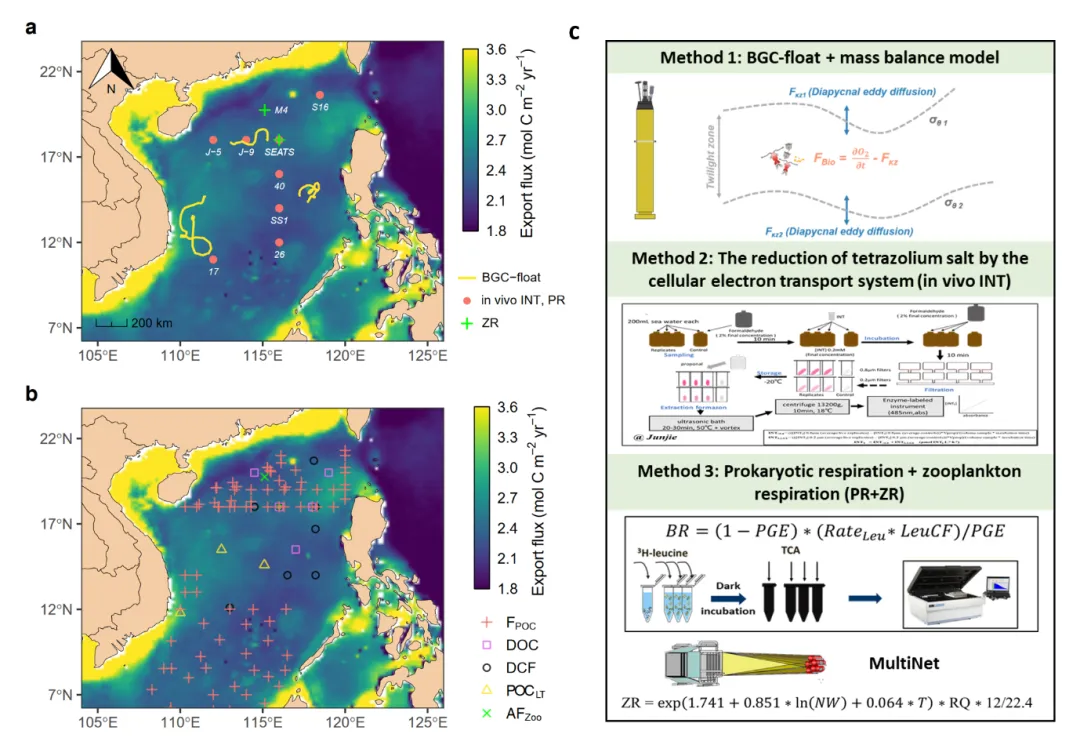Chao Xu, Mingwang Xiang, Bingzhang Chen, Yibin Huang*, Guoqiang Qiu, Yuchen Zhang, Haili Wang, Bangqin Huang*
Progress in Oceanography
https://doi.org/10.1016/j.pocean.2024.103316
Published: 19 August 2024
Abstract
The twilight zone remineralization (TZR) consumes over 70% of organic carbon exported from the sunlit ocean, significantly affecting oceanic carbon sequestration and atmospheric CO2 concentration. Despite the wellestablished importance, the quantification of TZR remains challenging, as reflected by conspicuous methodological discrepancy and the unsolved imbalance between carbon supply from the upper layer and demand at depth. Here we combined three independent approaches, including biogeochemical profiling floats (BGC-float) observation, in vivo reduction of the tetrazolium salt by the cellular electron transport system (in vivo INT), and the synthesis of prokaryotic respiration (PR) determined by radiolabeled leucine incorporation and zooplankton respiration (ZR) empirically estimated from the biomass (PR + ZR), to investigate the TZR in the South China Sea basin. Our results show that the BGC-float and PR + ZR approaches gave more consistent results, with the respective values of 5.1 +/- 0.5 and 6.4 +/- 3.0 mol C m- 2 yr- 1. However, in vivo INT approach yielded a TZR nearly an order of magnitude higher at 30.0 +/- 6.1 mol C m- 2 yr- 1. To further reconcile methodological discrepancies, we estimated the possible range of carbon supply by integrating comprehensive carbon sources, including sinking particles, dissolved organic carbon input, lateral transport, dark carbon fixation, and active carbon transport by zooplankton migration. After considering multiple carbon sources, we successfully balanced the carbon demand as indicated by BGC-float and PR + ZR approaches. Our intercomparison exercise suggests a potential overestimation of TZR by the in vivo INT approach, and also highlights the importance of integrating multiple carbon sources in closing the twilight zone carbon budget.
